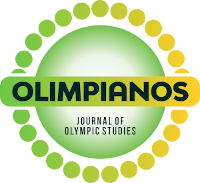Para una tanatologia de los estádios Olimpicos
DOI:
https://doi.org/10.30937/2526-6314.v1n2.id21Palabras clave:
Stadium, Demolition, Death, Narrative, IconResumen
The sociology of sport has over a 30-year history of developing a deeper understanding of urban life by conceptualizing the ways in which sport, both as a dominant cultural form, and as the infrastructure that houses it, is connected to the construct of community and identity. Olympic stadiums, for example, are projected as symbols of global urban status, focal points for local collective identity, and as verification of urban regeneration success –that is, in a sense, as the concrete embodiment of the Olympic Dream.
So what happens when an Olympic stadium is abandoned or destroyed? What happens when an Olympic stadium dies? The purpose of this essay is to provoke thought about the role and meaning of Olympic stadium death. We draw upon media studies, gerontological, and thanatological literature to explore how former Olympic stadiums are presented in global media reports. Situated in the notion that cultural objects have a biography of a life span much as individuals do (Kopytoff, 1986), we ultimately call for a thanatology of sports stadiums.
Descargas
Descargas
Publicado
Número
Sección
Licencia
Los autores autorizan a otros a copiar y redistribuir el material en cualquier medio o formato. Remezcla, transforma y crea a partir del material. No puede utilizar el material con fines comerciales.






